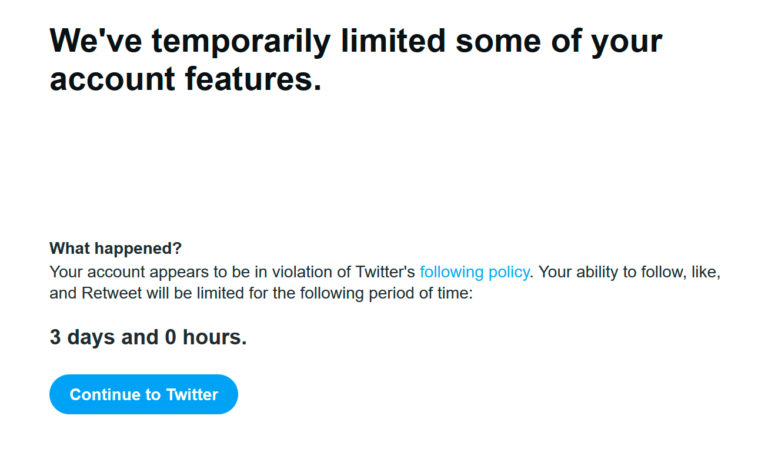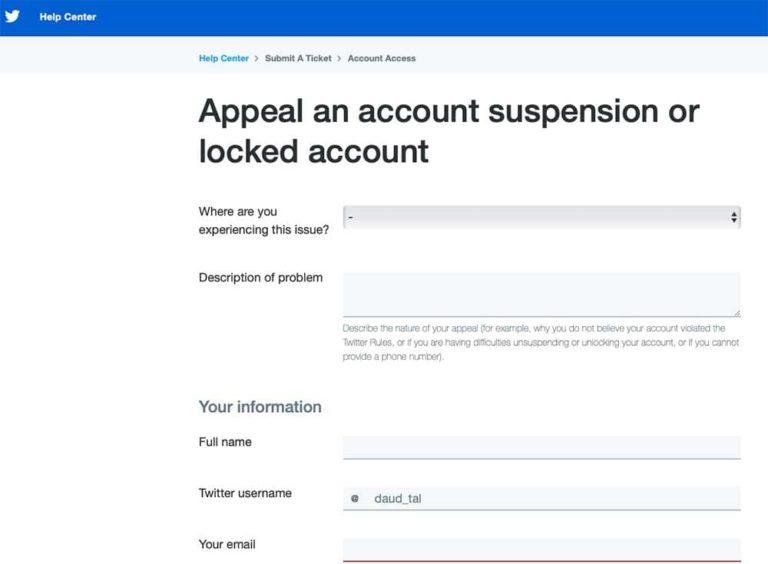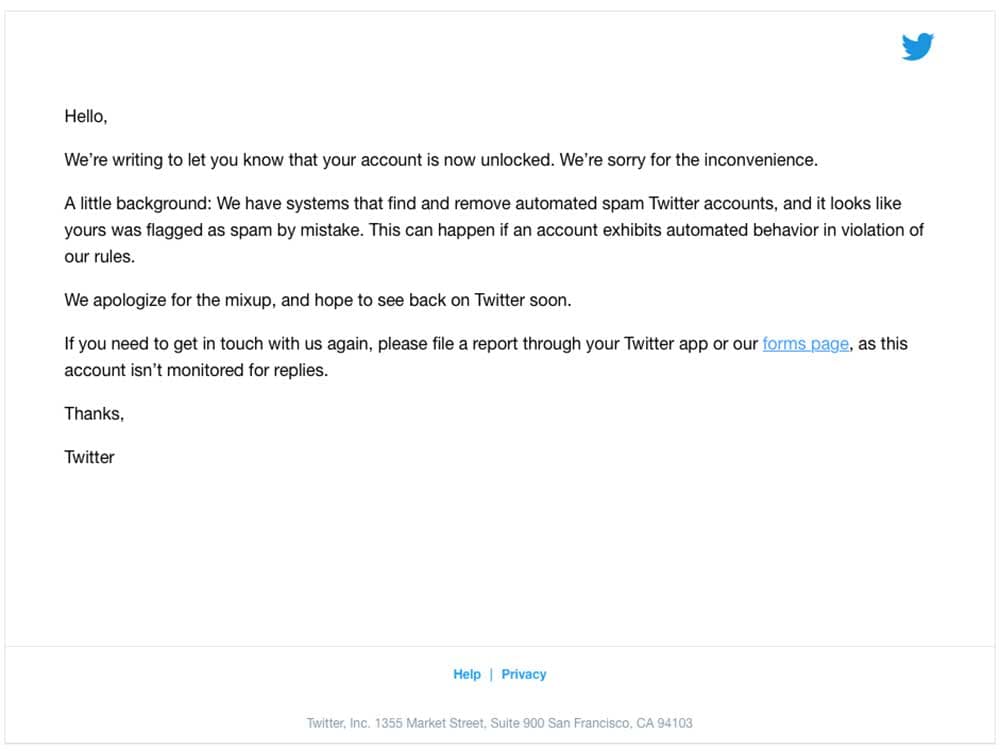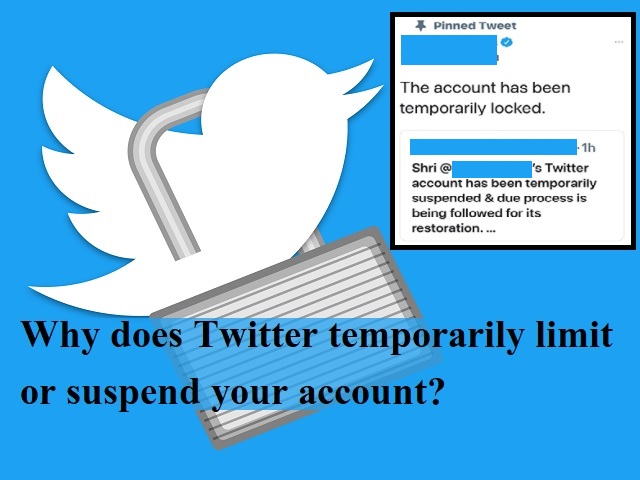Understanding Twitter’s Rules and Guidelines
Twitter’s rules and guidelines are in place to ensure a safe and respectful environment for all users. When a Twitter account is locked for violating these rules, it can be frustrating and confusing. To avoid this situation, it’s essential to understand what constitutes a rule violation. Twitter’s rules prohibit a range of behaviors, including spamming, harassment, and impersonation.
Spamming, for example, includes posting duplicate or unsolicited content, using automated systems to send tweets, or creating multiple accounts to evade restrictions. Harassment, on the other hand, involves targeting individuals or groups with abusive or threatening content. Impersonation, meanwhile, includes pretending to be someone else or creating an account that misrepresents a person or organization.
Twitter’s rules also prohibit posting explicit content, engaging in hate speech, or promoting violence. Additionally, users are not allowed to use Twitter to manipulate or interfere with elections, or to spread misinformation. By understanding these rules, users can avoid behaviors that may result in their Twitter account being locked for violating rules.
It’s worth noting that Twitter’s rules are not exhaustive, and the platform may take action against accounts that engage in behaviors that are not explicitly prohibited. This is why it’s essential to use common sense and respect when interacting with others on Twitter. By doing so, users can help maintain a positive and respectful environment for everyone.
When a Twitter account is locked for violating rules, it can be a significant inconvenience. However, by understanding Twitter’s rules and guidelines, users can take steps to avoid this situation and maintain a healthy Twitter presence. In the next section, we’ll explore the possible reasons why a Twitter account may be locked, and how to identify the specific reason for the lock.
Why Was My Twitter Account Locked?
If your Twitter account has been locked, it’s essential to understand why this happened. Twitter’s automated systems and human review processes work together to identify and address potential rule violations. When an account is locked, it’s often due to a specific reason, such as spamming, harassment, or impersonation.
To identify the reason for the lock, check the email notification sent by Twitter. This email will typically include information about the specific rule violation and the actions required to resolve the issue. If you’re unsure about the reason for the lock, you can also check your Twitter account’s settings and notifications for more information.
In some cases, Twitter’s automated systems may flag an account for review, even if there hasn’t been a specific rule violation. This can happen if an account is exhibiting suspicious behavior, such as rapid-fire tweeting or following/unfollowing large numbers of users. If this happens, Twitter’s human review team will assess the account and determine whether it’s in compliance with the platform’s rules.
It’s also possible that a Twitter account may be locked due to a report from another user. If someone reports your account for harassment, spamming, or other forms of abuse, Twitter’s review team will investigate and take action if necessary.
Understanding the reason for the lock is crucial to resolving the issue and getting your Twitter account unlocked. In the next section, we’ll provide a step-by-step guide on how to appeal a Twitter account lock and get your account reinstated.
How to Appeal a Twitter Account Lock
If your Twitter account has been locked due to a rule violation, you can appeal the decision by filling out a form on the Twitter website. To start the appeal process, go to the Twitter help center and click on the “Appeal an account suspension or lock” link.
On the appeal form, you’ll be asked to provide some basic information about your account, including your username, email address, and phone number. You’ll also be asked to explain why you think your account was locked in error, and to provide any additional context or information that may be relevant to the appeal.
When filling out the appeal form, be sure to provide clear and concise information about your account and the reason for the lock. This will help Twitter’s review team to quickly and accurately assess your appeal. Additionally, be sure to proofread your appeal carefully to ensure that it is free of errors and typos.
After submitting your appeal, Twitter’s review team will assess your account and the reason for the lock. This process typically takes a few days, but it may take longer in some cases. If your appeal is successful, your account will be unlocked and you’ll be able to access it again. If your appeal is denied, you may be able to appeal again or take other steps to resolve the issue.
It’s worth noting that Twitter’s appeal process is designed to be fair and impartial. The review team will assess each appeal on a case-by-case basis, taking into account the specific circumstances of the account lock. By providing clear and concise information about your account and the reason for the lock, you can help to ensure that your appeal is successful.
In the next section, we’ll provide some tips and best practices for preventing future account locks, including being mindful of tweet content, avoiding spammy behavior, and reporting suspicious activity.
Preventing Future Account Locks: Best Practices for Twitter Users
To avoid having your Twitter account locked for violating rules, it’s essential to follow best practices that promote a healthy and respectful Twitter presence. One of the most critical steps is to be mindful of your tweet content. Avoid posting tweets that contain spam, harassment, or explicit content, as these can quickly lead to an account lock.
Another best practice is to avoid spammy behavior, such as following or unfollowing large numbers of users in a short period. This type of behavior can be seen as suspicious and may trigger an account lock. Instead, focus on engaging with your followers and creating high-quality content that adds value to the Twitter community.
Reporting suspicious activity is also crucial in preventing future account locks. If you notice any suspicious behavior from other users, such as harassment or spamming, report it to Twitter immediately. This helps to maintain a safe and respectful environment for all users.
Additionally, it’s essential to review Twitter’s rules and guidelines regularly to ensure you’re aware of any changes or updates. This will help you avoid unintentionally violating rules and reduce the risk of an account lock.
By following these best practices, you can significantly reduce the risk of having your Twitter account locked for violating rules. Remember, a healthy Twitter presence is key to long-term success on the platform.
In the next section, we’ll highlight common mistakes that can lead to a Twitter account lock, including using bots or automated systems, posting explicit content, and engaging in harassment or bullying.
Common Mistakes That Can Get Your Twitter Account Locked
While Twitter’s rules and guidelines are in place to ensure a safe and respectful environment for all users, there are common mistakes that can lead to a Twitter account lock. One of the most common mistakes is using bots or automated systems to send tweets or engage with other users. This type of behavior can be seen as spammy and may trigger an account lock.
Posting explicit content is another common mistake that can lead to a Twitter account lock. This includes posting tweets that contain graphic violence, nudity, or other explicit material. Twitter’s rules prohibit this type of content, and posting it can result in an account lock.
Engaging in harassment or bullying is also a common mistake that can lead to a Twitter account lock. This includes posting tweets that contain hate speech, threats, or other forms of harassment. Twitter takes these types of behaviors seriously and may lock an account if they are reported.
Impersonating other users or creating fake accounts is another common mistake that can lead to a Twitter account lock. This includes creating accounts that pretend to be someone else or creating multiple accounts to evade restrictions. Twitter’s rules prohibit this type of behavior, and engaging in it can result in an account lock.
By avoiding these common mistakes, you can significantly reduce the risk of having your Twitter account locked for violating rules. Remember, a healthy Twitter presence is key to long-term success on the platform.
In the next section, we’ll explain the review process for locked Twitter accounts, including the timeframe for review, the types of information Twitter may request, and the possible outcomes.
Twitter Account Lock: What to Expect During the Review Process
When a Twitter account is locked for violating rules, the review process typically takes a few days to a week. During this time, Twitter’s review team will assess the account and the reason for the lock. The team may request additional information or context to help make a decision.
The review process typically involves a thorough examination of the account’s activity, including tweets, direct messages, and other interactions. Twitter’s review team may also consider factors such as the account’s history, the severity of the rule violation, and the user’s intent.
There are several possible outcomes during the review process. If the review team determines that the account was locked in error, they may unlock the account and restore access. If the review team determines that the account did indeed violate Twitter’s rules, they may take further action, such as suspending the account or requiring the user to take a tutorial on Twitter’s rules.
In some cases, Twitter may request additional information or context from the user to help resolve the issue. This may include providing identification or explaining the context behind a particular tweet or action. Users can respond to these requests through the Twitter help center or by contacting Twitter’s support team.
It’s essential to note that Twitter’s review process is designed to be fair and impartial. The review team will assess each case on its own merits, taking into account the specific circumstances and context. By understanding the review process, users can better navigate the system and resolve issues related to their Twitter account.
In the next section, we’ll provide guidance on what to do after a successful appeal, including updating account information, reviewing Twitter’s rules, and taking steps to prevent future locks.
Recovering Your Twitter Account: What to Do After a Successful Appeal
After a successful appeal, it’s essential to take steps to recover your Twitter account and prevent future locks. The first step is to update your account information, including your profile picture, header image, and bio. This will help to ensure that your account is secure and up-to-date.
Next, review Twitter’s rules and guidelines to ensure that you understand what constitutes a rule violation. This will help you to avoid making the same mistake again and reduce the risk of another account lock.
Additionally, take steps to prevent future locks by being mindful of your tweet content, avoiding spammy behavior, and reporting suspicious activity. This will help to maintain a healthy Twitter presence and reduce the risk of another account lock.
It’s also essential to monitor your account activity regularly to ensure that everything is running smoothly. This includes checking your notifications, responding to messages, and engaging with your followers.
By following these steps, you can recover your Twitter account and prevent future locks. Remember, a healthy Twitter presence is key to long-term success on the platform.
In the next section, we’ll offer advice on how to maintain a healthy Twitter presence, including engaging with followers, creating high-quality content, and monitoring account activity.
Maintaining a Healthy Twitter Presence: Tips for Long-Term Success
Maintaining a healthy Twitter presence is crucial for long-term success on the platform. One of the most important tips is to engage with your followers regularly. This includes responding to messages, answering questions, and participating in conversations related to your niche or industry.
Creating high-quality content is also essential for maintaining a healthy Twitter presence. This includes sharing relevant and informative tweets, using relevant hashtags, and including eye-catching images or videos. By creating high-quality content, you can attract and retain followers, and increase your visibility on the platform.
Monitoring your account activity is also critical for maintaining a healthy Twitter presence. This includes checking your notifications regularly, responding to messages and comments, and keeping an eye on your follower growth and engagement metrics. By monitoring your account activity, you can identify areas for improvement and make data-driven decisions to optimize your Twitter strategy.
Additionally, it’s essential to stay up-to-date with Twitter’s rules and guidelines, and to adjust your strategy accordingly. This includes staying informed about changes to Twitter’s algorithm, and adapting your content and engagement strategy to optimize your visibility and reach.
By following these tips, you can maintain a healthy Twitter presence and achieve long-term success on the platform. Remember, a healthy Twitter presence is key to building a strong online reputation, attracting and retaining followers, and driving website traffic and sales.







